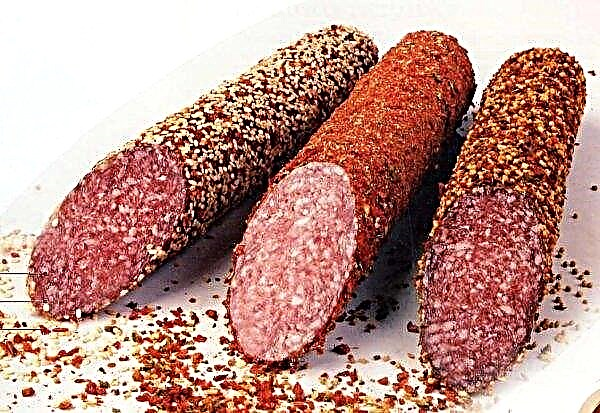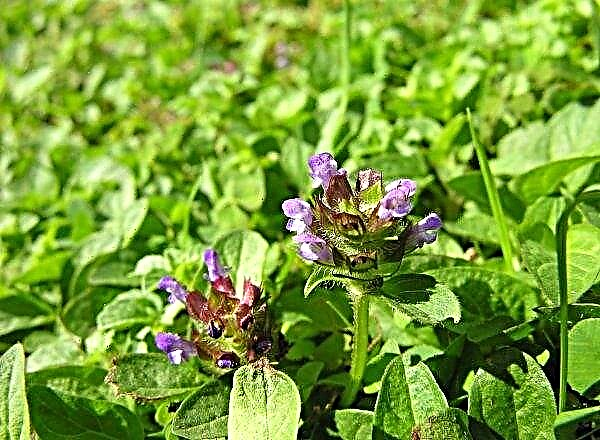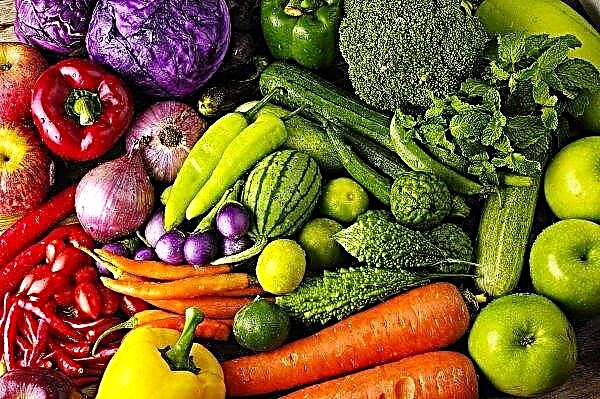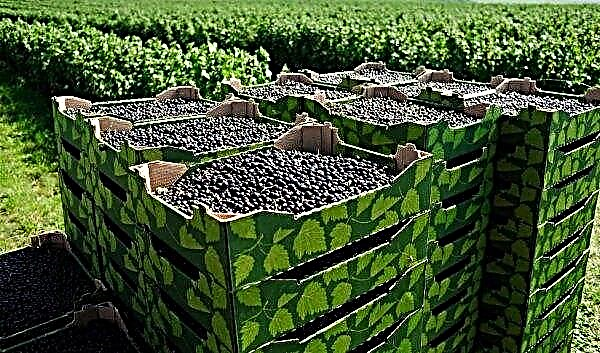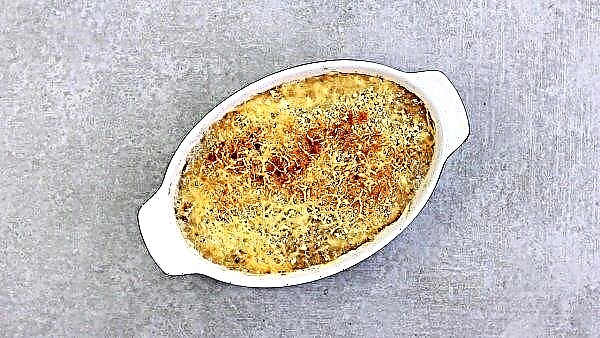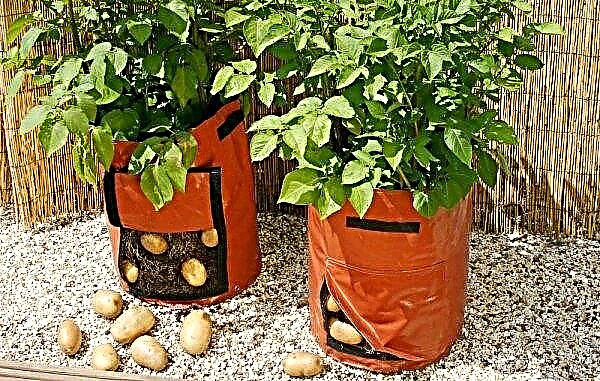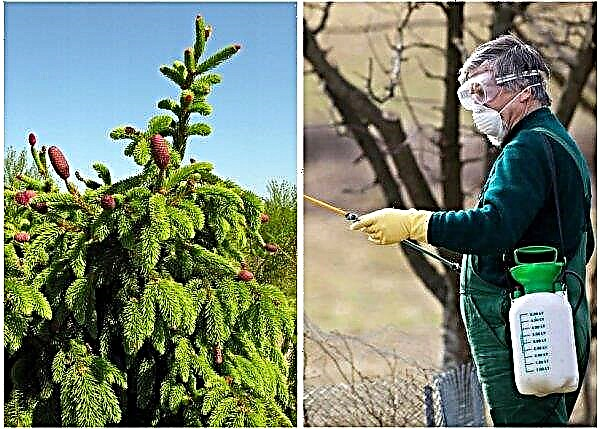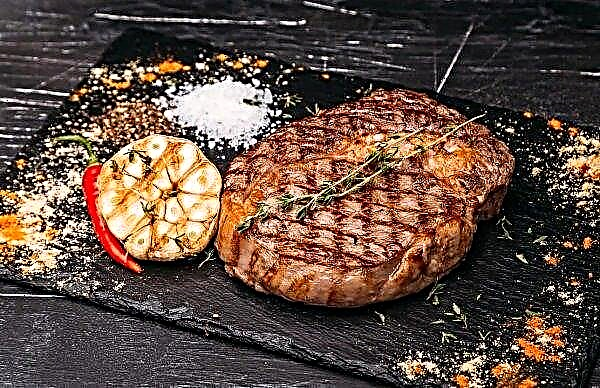Nutmeg squash is one of the most popular and common vegetables in the world. This crop is notable for its good yield and ability to bear fruit even in difficult conditions. In addition, the fruits of this pumpkin have a huge concentration of nutrients that provide a healing effect on the body. Next, we consider in detail the most popular varieties of nutmeg pumpkin, and also list the basic rules for its cultivation.
Varieties of nutmeg pumpkin
Various varieties of nutmeg pumpkins make it possible to cultivate this useful crop in any climatic region. But, despite this, not many varieties are considered popular among vegetable growers. Below we describe the most productive hybrids, which will help you choose the most profitable and productive variety.
Did you know? Muscat pumpkin got its name for a reason: the fresh fruits of the plant on the cut emit a persistent and rich smell of nutmeg, identical to the aromas of grape cultures.
Arabat
The plant belongs to late-ripening varieties, with an active vegetation period of about 120-130 days. The fruits of the vegetable are cylindrical, slightly thickened at the apex, with medium-dense orange skin. In ripe form, the fruits of the variety reach a weight of 9–10 kg. The pulp of a pumpkin is thick, juicy, saturated orange tones. The variety is distinguished by high keeping quality and transportability, as well as resistance to a variety of infections.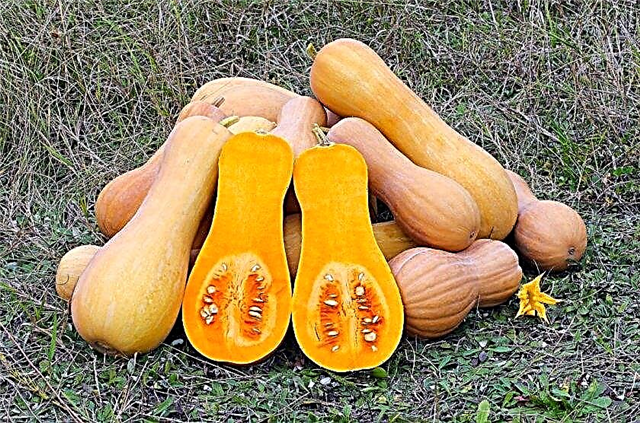
Butternut
This variety belongs to early ripening crops, the duration of its vegetation often does not exceed 90 days. Bright orange, elongated, pear-shaped fruits ripen on this pumpkin, weighing up to 8–9 kg, with medium-dense skin. The fruits are quite dense, but juicy pulp, with a bright orange color and nutty flavor. The crop is characterized by a high content of vitamins and minerals, and is also capable of being stored at room temperature for up to 3 months.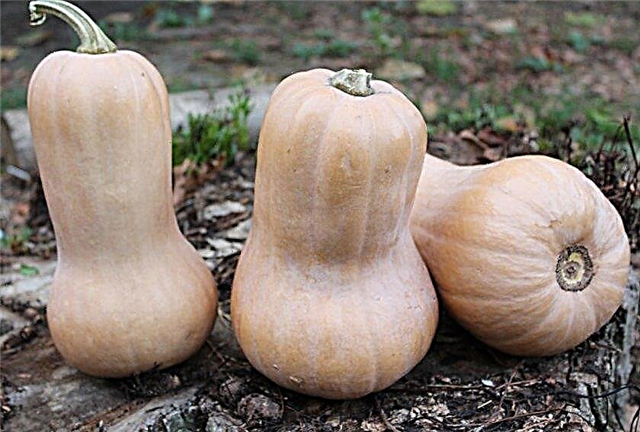
Vitamin
Vitamin pumpkin belongs to late-ripening crops, the duration of its vegetation is on average 130–135 days. It differs in small oval fruits, weighing up to 6 kg, dark green in color. The peel of the fruit is thin, the pulp is dense and crispy, orange-red. The main advantage of the crop can be called an increased content of carotene, as well as a good keeping quality of the fruit.
Gilea
The plant is known as a mid-early crop that bears fruit 95–100 days after sowing. This plant produces rounded fruits, slightly flattened in the horizontal direction. Their average weight is about 7–8 kg. They are characterized by a dense skin of orange color, with a light wax coating, as well as a dense pulp with a pronounced sweetish aftertaste, of a pale orange hue. This vegetable has the best dietary properties and is also resistant to fungal infections.
Pearl
This variety has an average ripening period, its growing season is not more than 110 days. Ripe pumpkin has a mass of up to 7 kg, orange or pale orange color and loose skin. The cut flesh is dense and juicy, bright orange in color. Pumpkins have an oval, slightly flattened shape, but sometimes it can be modified to cylindrical. The variety is characterized by cold resistance, as well as a high content of carotenes and sugars.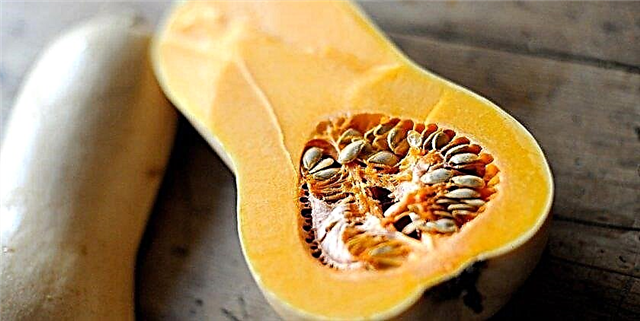
Spanish guitar
Variety Spanish guitar belongs to the varieties of medium ripening period, the growing season is about 110 days. The ripe vegetable is club-shaped, with a characteristic circle on the edge. The fruit color is usually pale orange, the skin is loose, the pulp is juicy, dense, with a slight aroma of apricot, carrot or apricot color. The average weight of one vegetable is within 5 kg. Fruits are distinguished by high shelf life (up to 100 days), as well as an increased pulp coefficient (up to 95% of the total volume).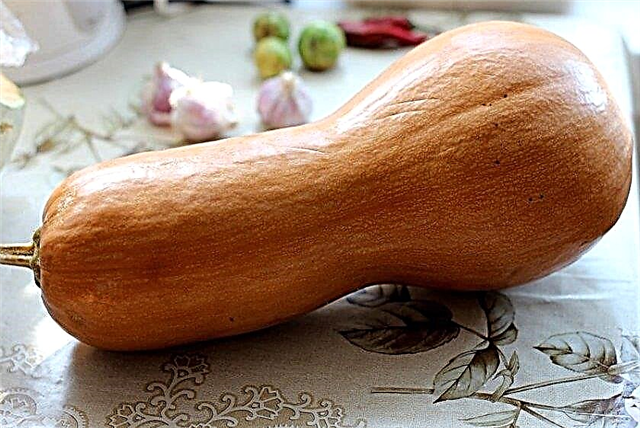
Honey princess
This plant has a mid-ripening period of maturation, the first crop appears 115 days after sowing seeds. Fruits are rounded, oblate in the horizontal direction, divided into characteristic segments. The average weight of one pumpkin is 3.5 kg. The skin is orange, medium dense, the pulp is dense, moderately watery, very sweet, pale orange. The hybrid is well resistant to a variety of pumpkin diseases, as well as sudden changes in weather conditions.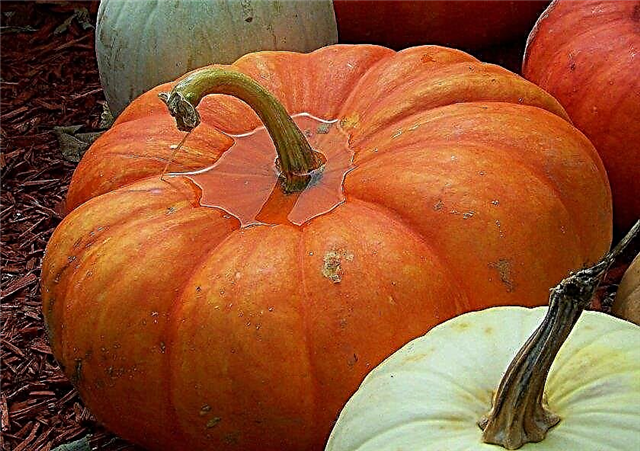
Muscat de Provence
This is a hybrid of late ripening, the duration of its growing season is about 130 days. The fruits are large, oval, divided into segments, the weight of one fruit reaches 10 kg. They are characterized by a dense peel and a pale orange color, as well as a dense carrot-colored flesh with a honey flavor. A distinctive feature of the cultivar is high keeping quality and transportability of the crop, as well as the resistance of the hybrid to fungi and other pathogens of infectious diseases.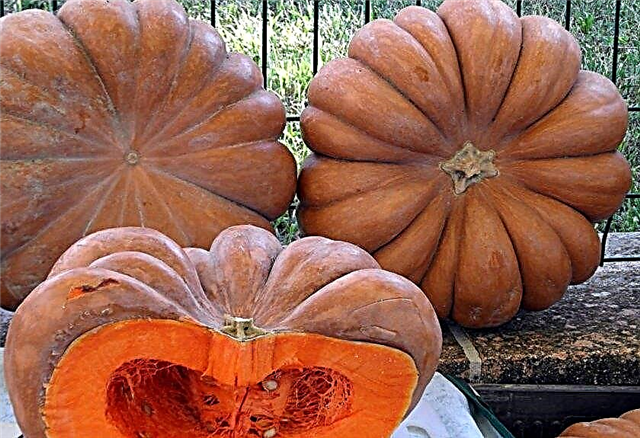
Paris Gold
Paris Gold is a large-fruited hybrid of early maturity. The growing season of the plant lasts up to 3 months. The fruits are spherical, with a loose carrot-colored peel, as well as a dense, yellow-orange pulp, with moderate water content. The average weight of fruits is 20 kg, but under optimal conditions, pumpkins weighing 50-60 kg can be grown. The hybrid is characterized by increased resistance to fungi and all kinds of pumpkin diseases.
Prikubanskaya
The hybrid has medium or medium early ripening, depending on growing conditions, the growing season ranges from 95 to 135 days. Ripe pumpkins are pear-shaped and thin peels. The fruit pulp is dense, moderately juicy. The average weight of the fruit is about 3.5–4 kg; they are characterized by a uniform orange color of both the pulp and the peel. The variety has one of the most favorable production qualities: the crop can be stored for up to 4 months without losing its presentation.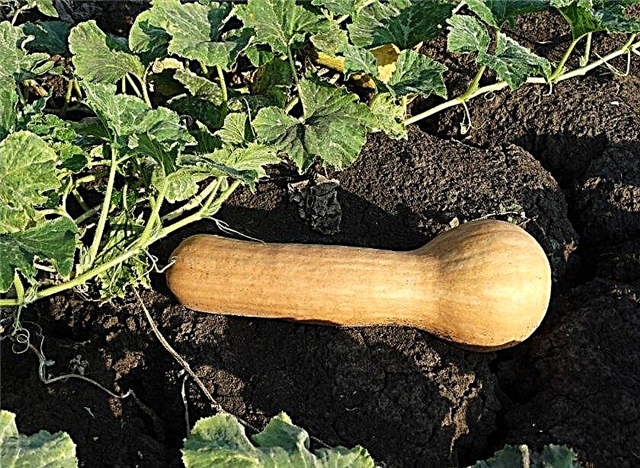
New
The hybrid is characterized by average ripening, the first fruits can be harvested 110–120 days after sowing seeds. Pumpkins are cylindrical in shape with a slightly rounded bulge on the edge. The peel of the fruit is thin, smooth, the flesh is tender, soft and juicy. The average weight of one fetus is 4–5 kg. The hue of the fruits is uniform, orange or pale orange. The main highlight of the variety can be called increased resistance to drought, as well as a high sugar content.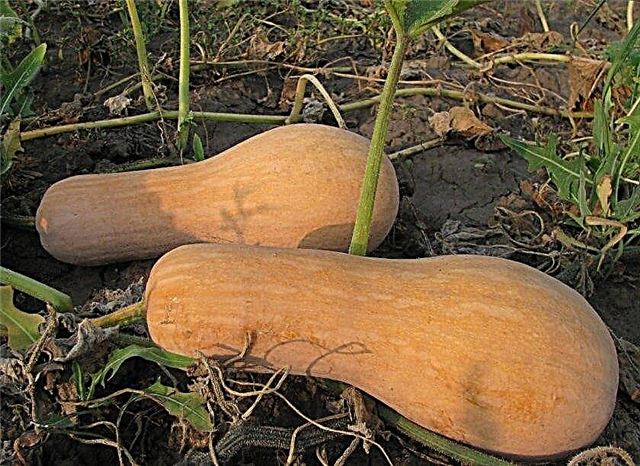
Spaghetti
Spaghetti is a super-early hybrid that matures in 70–80 days. The fruits of the variety are elongated, rounded, similar to zucchini, weighing up to 2 kg. Their skin is dense, green-yellow, the pulp is soft, dry, easily cut into separate fibers at the cut.
The variety is ideal for all kinds of culinary treatments, it has a soft, inexpressive taste, and is also able to instantly absorb rich aromas.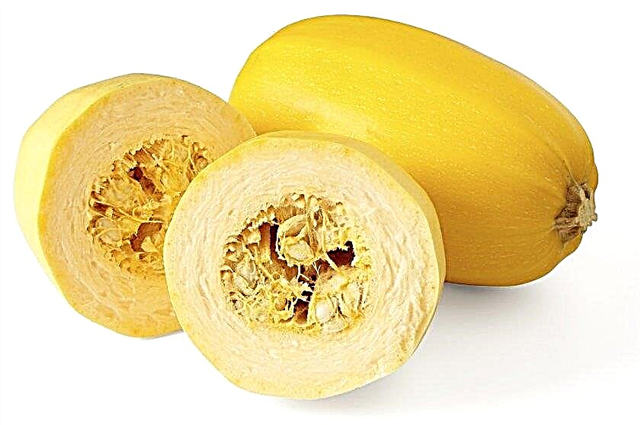
Candied
The plant belongs to mid-season crops, which ripens 100–115 days after sowing. Its fruits have a rounded, flattened in horizontal position shape. Pumpkin is divided into uniform segments, the fruits are distinguished by a thin skin of a light brown hue. Their weight averages about 6.5 kg. The pulp of a vegetable is dense, not very juicy, orange or brown-orange in color. The hybrid is well adapted to sudden changes in weather conditions, and also keeps the crop fresh for up to 200 days.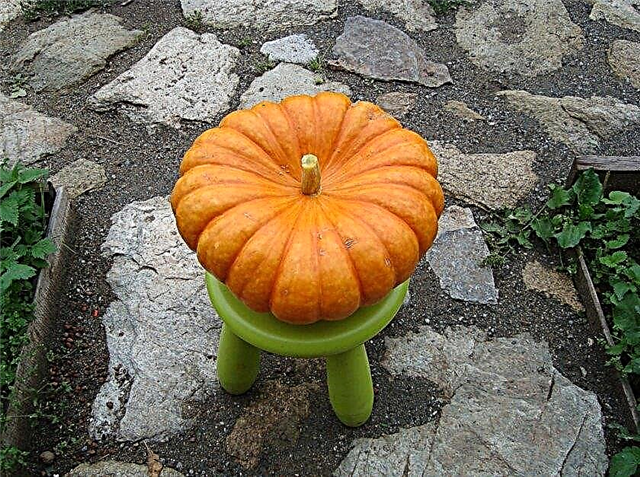
Smile
Pumpkin of the Ulybka variety is an early ripe plant, with a growing season of not more than 90 days. The hybrid forms small, rounded fruits, weighing no more than 1-1.5 kg. Their peel is medium-dense, saturated carrot.
The flesh of this variety is not very juicy, dense, bright orange in color, with a characteristic aftertaste of melon. A distinctive feature of the hybrid is its increased crop keeping quality; under optimal conditions (at a temperature of about + 10-15 ° C), pumpkin can survive for up to six months.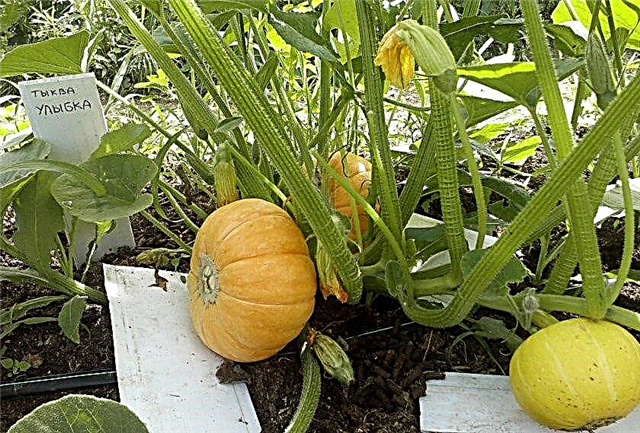
Hokkaido
Hokkaido is a medium-ripening plant with a growing season of about 110 days. The hybrid differs from its relatives in small pear-shaped fruits, slightly flattened in a horizontal position and weighing about 0.5–2.5 kg. The skin of the pumpkin is not very dense, saturated carrot color. The pulp is dense, moderately juicy, pale orange in color. The fruits are quite sweet, with a characteristic nutty flavor. For cooking, the vegetable is suitable in both mature and immature form.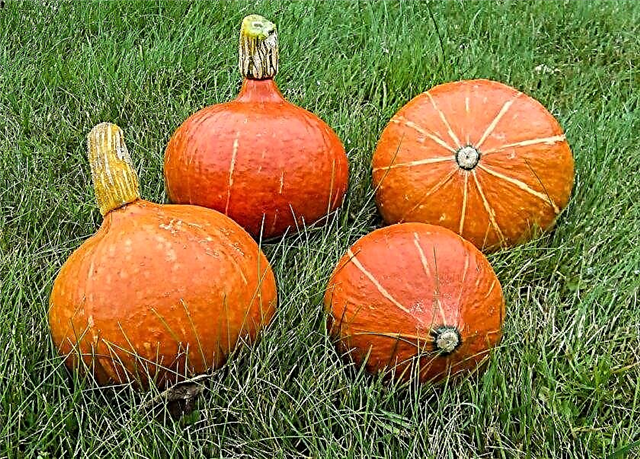
Features of outdoor cultivation
Modern hybrids of nutmeg pumpkins are quite unpretentious plants in relation to the climate, as well as soil conditions, so even a novice farmer can cultivate this vegetable in a summer cottage. However, pumpkin cultivation often brings a lot of trouble.
In order to get healthy and fruiting bushes, pumpkin must create an optimal microclimate.
Did you know? South America is considered the birthplace of pumpkins; in Mexico, Indian tribes began cultivating the culture another 5 thousand years ago. But the plant got to Europe only in the 16th century, with the ships of the Spanish discoverers.
Landing
Muscat squash feels best in tropical and subtropical climates at a temperature of at least +20 ° C. In a warm climate, seeds are sown in the soil in early June, when breeding crops in the northern and temperate zones, they necessarily resort to growing seedlings.
Seeds are sown for seedlings in the second half of April, plants are transplanted into the open soil in the second half of May or early June. First, the sprouts are kept under a film cover, which after warming must be removed. They plant a vegetable on well-fertilized soils with low moisture capacity (loamy, sandy loamy soils), since stagnation of moisture in the soil can cause plant death. It is best if the plot under the beds is located on a hill, which will additionally protect the plants from excess moisture.
They plant a vegetable on well-fertilized soils with low moisture capacity (loamy, sandy loamy soils), since stagnation of moisture in the soil can cause plant death. It is best if the plot under the beds is located on a hill, which will additionally protect the plants from excess moisture.
The beds must be broken in the open, away from the shade. Important for the culture and predecessor. Best pumpkin bears fruit after onions, potatoes, legumes, a variety of root crops.
Important! Pumpkin should not be cultivated after related cultures (zucchini, squash, cucumbers, etc.). Growing plants will not only be low-yielding, but they will also be susceptible to specific infections.
All pumpkin love space, so no more than 1 plant should be grown on 1 m². They are grown in a row-wise way, with a row spacing of at least 1 m, at a distance of 1.5 m between each bush. Seeds are sown to a depth of 3-4 cm, seedlings - not less than 10 cm in depth. To increase the viability of young plants, seedlings and seeds must be treated with an ash solution (400 g of wood ash / 10 l of water).
The seedlings are soaked for 1-2 hours before planting, the seeds 10-12 hours before sowing. The soil is fertilized before planting, the crop responds best to organic fertilizers. Rotted manure or compost is poured into each bed, after which the soil is carefully dug up.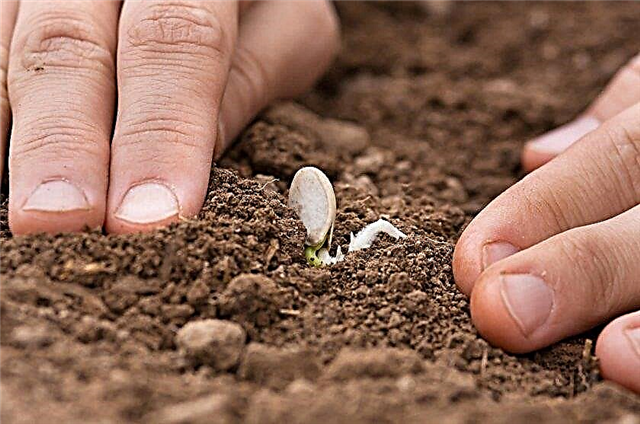
Care
The most demanding crop for irrigation. Every day, one bush requires at least 5 liters of moisture, so water the beds abundantly, while water should well soak the soil to a depth of at least 0.5–1 m. Culture is also required for top dressing. The first fertilizer of plants is carried out during flowering.
At this time, the culture responds best to an aqueous solution of cow manure (1:10) with the addition of superphosphate (3-4 g / 1 liter of liquid) and potassium sulfate (2 g / 1 liter of liquid). The second time the pumpkin is fed during flowering, for this, solutions of potassium sulfate (5 g / 1 l of liquid) and nitrophoska (2 g / 1 l of liquid) are used.
Important! If possible, beds with pumpkin are mulched: this helps to avoid unnecessary weeding, and also creates the microclimate necessary for the culture in the soil.
The crop needs weeding only before flowering, which helps to protect it from the negative effects of weeds. Such a procedure is carried out as necessary, until large leaves that shade the root zone are formed on the bush. This inhibits the growth of weeds and leads to their degeneration in a natural way. Bushes necessarily require pruning, without this it will be difficult to grow a large pumpkin.
Pruning is resorted to when plant lashes reach 1 m in length. All whips except the main one should be removed, so the central stem with two lateral branches no more than 70 cm long should remain on the plant.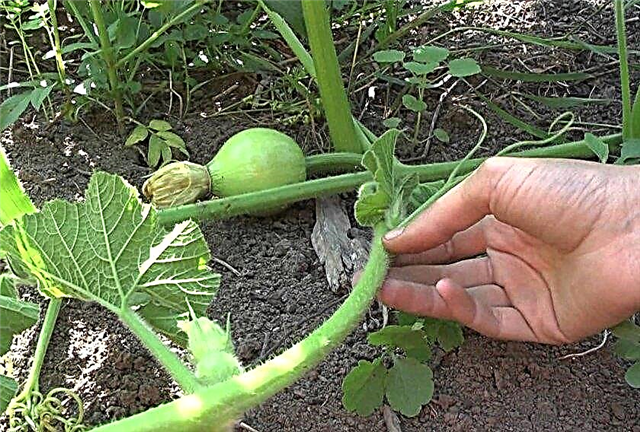 In order to increase the pumpkin yield from 1 m², many professional agronomists recommend resorting to artificial pollination of plants. As you know, this culture is incapable of self-pollination, therefore, pollen is often transferred from male to female flower due to bees.
In order to increase the pumpkin yield from 1 m², many professional agronomists recommend resorting to artificial pollination of plants. As you know, this culture is incapable of self-pollination, therefore, pollen is often transferred from male to female flower due to bees.
However, it is rather difficult to meet these insects near the city line, so the process is best done independently. To do this, use a soft brush or brush to transfer pollen from male inflorescences to female.
Muscat pumpkin is a universal species, the variety of varieties of which may surprise even an experienced gardener. This species is distinguished by aromatic fruits with improved taste and production qualities. In order for pumpkin beds to please you with fragrant fruits, you need to create the necessary conditions for them and ensure proper care.

